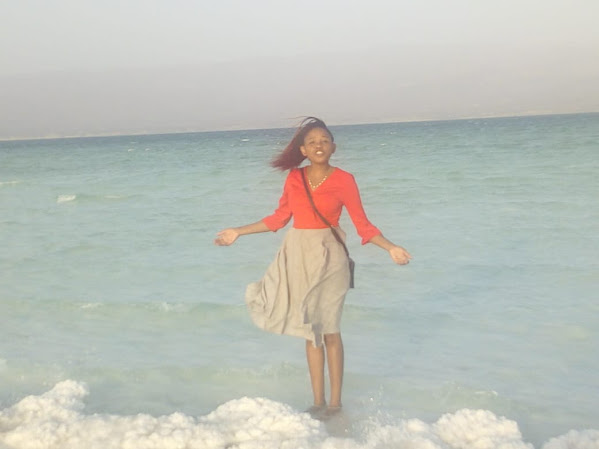Lake Assal is an abnormal lake among the most pungent on the planet. Situated in the least despondency of the African landmass with its 153 meters underneath ocean level and kept in the core of one of the most ungracious desert areas, the lake is encircled by latent volcanoes and magma residue of an extreme dim dark tone. An element of this lake, as displayed the pictures handled through the converging of these pictures gained by Sentinel-2 and Landsat 5 satellite, with a period window of 20 years and handled utilizing regular variety groups with a looking like information for Landsat from 30 to 10 meters band goal, shows the specific of this lake to change its tone with the variety of light during the day. Its variety changes from the blinding white because of the store of salt and sodium chloride precious stones, to turquoise and emerald green of the shore, the blue and the light blue of the most profound waters with their progressive subtleties.
A deceptive heaven
From the outset, Djibouti's Lake Assal shows up as a magnificent territory of greenish blue water ringed by blinding white sand. It could without much of a stretch be confused with a Caribbean ocean side. In any case, it is every one of the a façade, a simple simulacrum of heaven. The tremendous plain isn't sand in any way, yet salt.
Strolling shoeless towards the water across the solidified salt field is awkward, best case scenario. As you close to the lake's edge, the furious breeze whips across the plain and slings salt particles against your skin. Entering the water offers no rest. The warm, shallow lake has a bizarre, thick quality; a slick surface that leaves a film on the skin. It stings the eyes and nibbles on each contact. A minuscule paper cut becomes utter torture.
The film of salt, mediocre in the water, becomes irritated when seared dry in the sun. The garbage bristles on the skin and leaves you tingling like a bug ridden canine. This is no Caribbean ocean side.
Multiple times saltier than the ocean
At 155m beneath ocean level, Lake Assal is the absolute bottom in Africa and the third absolute bottom on the planet after the Dead Ocean (- 423m) and the Ocean of Galilee (- 214m). It is taken care of via seawater by means of 5km-long subsurface geothermal springs connected to the Inlet of Tadjoura, an augmentation of the Bay of Aden toward the south-east of Lake Assal. There are no regular outpouring focuses in the lake, meaning the lake water is caught in the pit under Djibouti's burning sun.
Because of high paces of vanishing, Lac Assal has a typical salt grouping of 34.8% (which moves to as much as 40% at a profundity of 20m), multiple times saltier than seawater. It is the second saltiest waterway on Earth after Cassanova Lake in Antarctica, which has a saltiness level of over 47%. The Dead Ocean has a typical salt centralization of 33.7%.
An outsider scene
Lake Assal is arranged on a topographical misery known as the A remote place Triple Intersection, where three of Earth's structural plates are pulling separated, causing a few surprising, frequently dreamlike, regular peculiarities. The African, Somalian and Bedouin plates meet in the downturn, which extends across the boundaries of Eritrea, Djibouti and the whole A far distance District of Ethiopia. The downturn is home to a variety of biological irregularities, including the Dallol sulfur pools and Erta Lager spring of gushing lava in Ethiopia's Danakil Desert.
Circled by torpid volcanoes, Lake Assal - like such a great deal the encompassing scene - feels like it very well may be on an alternate planet. As the water vanishes, salt and other mineral stores grip to each other, making rough support points and different arrangements that make up this powerful scene.
An old custom proceeds
In spite of the unfriendly scene, the A remote place and Issa individuals have extensive and worked nearby, with salt fueling plentiful exchange for quite a long time. Individuals from the networks scratch and dig the salt from the lake's shore to be shipped along old troop courses to Ethiopia in return for coal, espresso and different products. By and large, ivory and even slaves were exchanged for Lake Assal salt.
Trains of camels and jackasses can in any case be seen conveying up to 120kg of salt each to Berhale in Ethiopia, an excursion that can require as long as five weeks. There, the salt is dumped and taken by truck to Ethiopia's bigger urban communities for more extensive circulation.
White gold
At the point when the Eritrean-Ethiopian Conflict broke out in 1998, Djibouti supplanted Eritrea as Ethiopia's essential salt provider. The requests of Ethiopia's populace (around 62 million at that point) kept costs high. Hence, the salt from Lac Assal became known as 'white gold'.
Generally, most of Lake Assal's salt extraction occurred on shore manually. Notwithstanding, with more popularity came the requirement for quicker and more current extraction processes. Heavier hardware was utilized to separate a lot bigger dish of salt from the water all things being equal, where it is gentler and simpler to mine. Salt creation in Lac Assal soared from thousands to countless tons each year, driving Djibouti's administration to grow the extraction cycle, further using current strategies to send out the salt from one side of the planet to the other









No comments:
Post a Comment